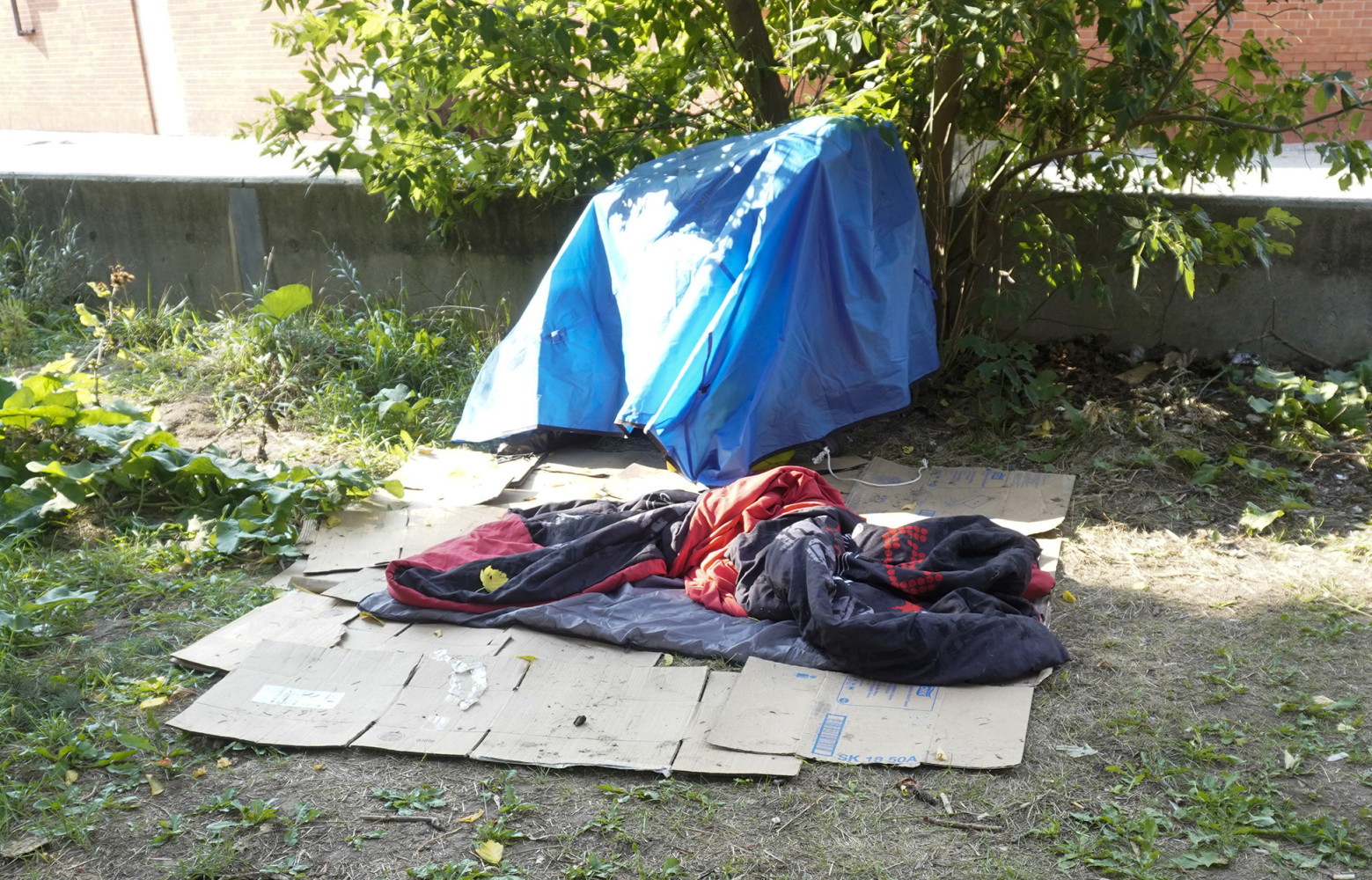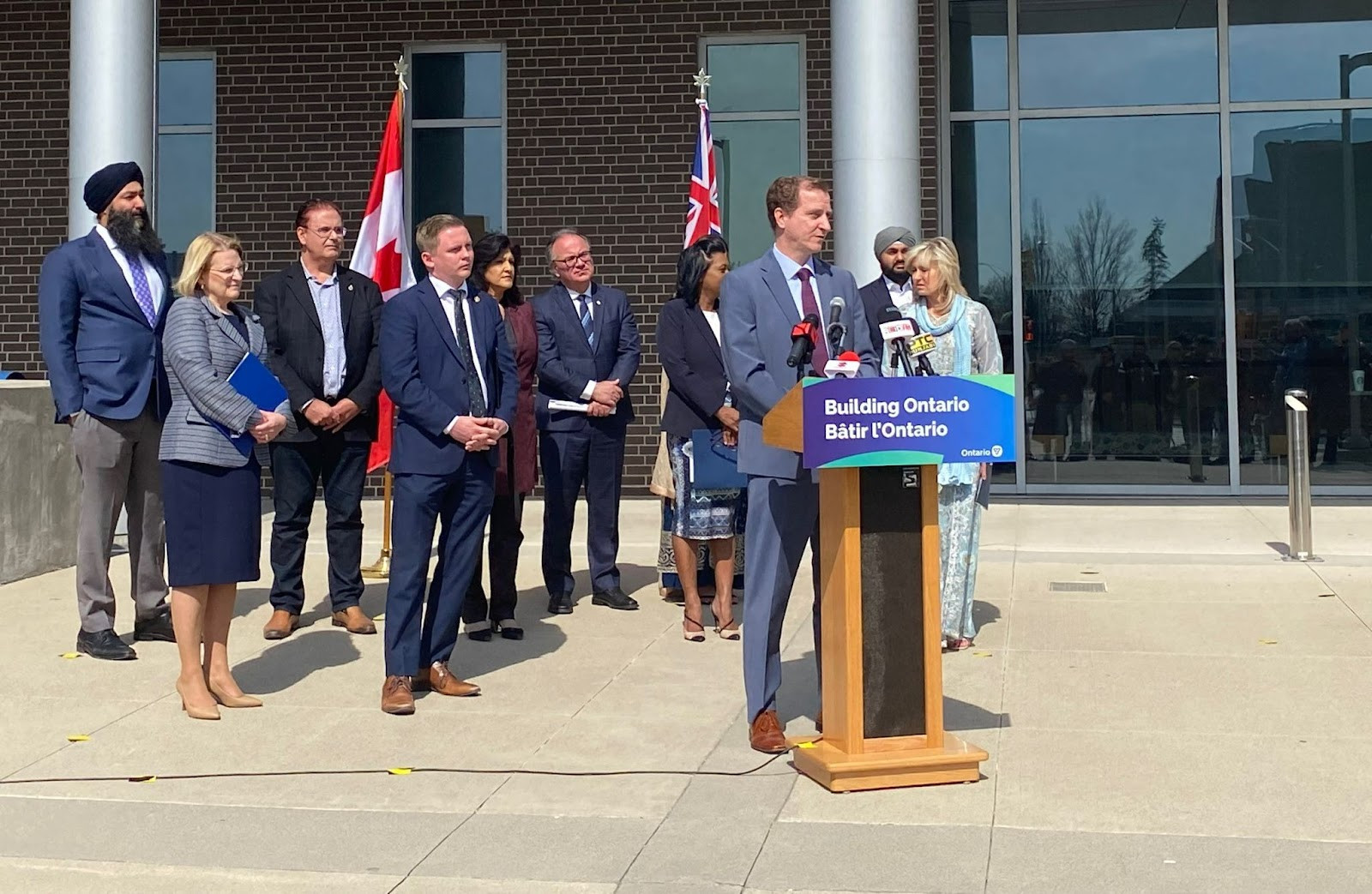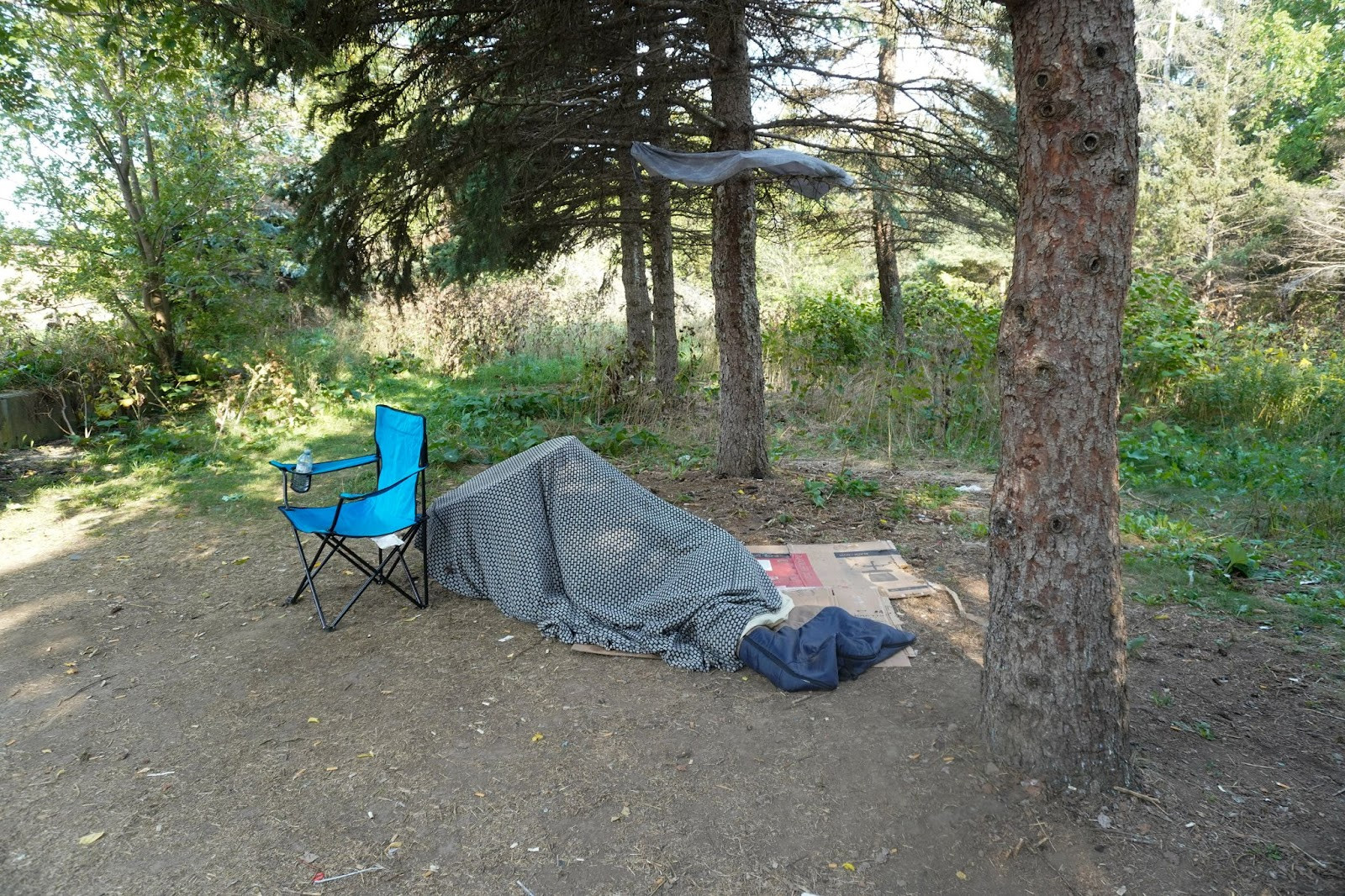
Ontario government announces 38% funding increase to combat rising homelessness in Peel
The Region of Peel is receiving a 38 percent increase from the provincial government in response to rising homelessness, bringing the total for 2023 to about $42.4 million — considerably less than what the Region asked for.
The roughly $11.7 million dollars in additional funding still leaves a wide gap as Peel experiences unprecedented housing pressures due to the lack of affordable supply, continued population growth and sharp cost of living increases.
To add 2,200 new affordable units by 2028 as part of a regional goal, the provincial government needs to provide almost $320 million dollars to an area of the GTA that has grown faster than almost any other part of the country.
A growing concern is the building industry’s current focus on constructing 1.5 million new homes across Ontario by 2031 under the Doug Ford government’s ambitious Bill 23, which does not guarantee affordable units will be part of the mix.
The funding was announced during a press conference outside the Peel Region headquarters on April 21, as part of the province-wide $202 million provided annually by taxpayers through the Province’s Homelessness Prevention Program and Indigenous Supportive Housing Program for 2023.
The Homeless Prevention Program works with service managers, including the Region of Peel, to provide supportive housing and other assistance to those experiencing houselessness.
Sean Baird, Commissioner of Human Services with the Region of Peel, said the majority of the funding increase will be allocated to the Peel Street Outreach Program, emergency shelter services and direct delivery of permanent housing.
The Street Outreach program operates in partnership with community agencies “to provide support, advocacy, and referrals to help people with their basic needs.” The program is delivered directly to different encampment sites.
Currently all shelters throughout Peel are operating at over full capacity, so Baird said the funding will assist with expanding the capacity over time.
During the press conference, Nando Iannicca, Peel’s chair, said the housing file has become a regular conversation between himself and Steve Clarke, Ontario’s Minister of Housing.
“It had gotten to the point Steve Clarke was in a room with me and said, ‘Before you say it, chair, let me get it out and say it, you’re going to ask me about housing and getting funding. Consider it asked and answered, we’re getting back to you.”

The region of Peel is getting a welcome boost from its provincial government counterpart to combat Peel’s homeless crisis.
(Region of Peel)
According to the Peel Housing and Homelessness Plan (2018-2028), in 2021 the federal and provincial governments funded just 22 percent of total operating expenditures for housing supports in the region.
According to the Regional plan, it has the capacity to add over 2,200 new affordable, supportive units and emergency beds on Region of Peel and Peel Housing Corporation lands by 2028, but to do this the province has to close a $319.6 million funding gap.
While the 38 percent increase narrows this difference, more operational funding from the federal and provincial governments is required to help residents get and keep affordable housing in Peel.
“To improve the availability of market housing that is affordable, the federal and provincial governments must take further action that encourage homes to be used for homes,” the plan reads.
“In addition, they must help to increase the supply of new affordable housing in complete communities and ensure the longevity of existing affordable housing. For instance, to maximize the effectiveness of planning tools like inclusionary zoning, support from the provincial and federal governments is needed to absorb the costs of ensuring a one-window system not only in Peel, but across Ontario.”
Mississauga Mayor Bonnie Crombie highlighted how severe the housing crisis is in the community, citing the Open WIndow Hub, a resource centre that supports families who are unhoused, experiencing mental health challenges, addiction issues or food insecurity.
“In the first quarter of this year alone the Open Window Hub has seen over 5,500 new individuals. Think about that for a moment. And we’ve had over 4,000 requests for supports and over 250 requests for housing. The waitlists are endless and we have to continue chipping away at them to continue finding supportive housing on a list that grows every day.”
Peel’s affordable housing waitlist has become unmanageable, as many requiring assistance have to wait decades, rendering the system ineffective. In two years, from the end of 2019 to the end of 2021 the number of households waiting for assistance ballooned from about 15,000 to more than 28,000.
Crombie said seniors aging out of the Ontario Disability Support Program and Ontario Works are part of one demographic group whose need for assistance is rapidly growing.
“We’re also seeing a higher uptake from females who are marginalized and a greater demand of supports for mental health and addictions. These numbers are frankly something we are not proud of, we need to take action, we need to do better, and in fact I’ll share, even our food bank has been experiencing a 60 percent increase in new visits.”
The City of Brampton has had an infamously heavy-handed approach to the housing crisis. Last summer, residents of an encampment behind Kingspoint Plaza protested at City Hall after Paladin Security, at the behest of the City, slashed tents as well as confiscated food and clothing.
One resident reported losing about $1,500 worth of camping gear, another said he lost about half the clothes he owned.

Occupants of Kingspoint Plaza in Brampton have protested at City Hall last summer, asking to be left alone as the City threatened a second raid via tickets from Paladin Security.
(Alexis Wright/The Pointer)
Many of the unhoused avoid the Region’s inadequate shelter system, which staff admit is chronically at capacity. Some cited safety concerns, others the lack of space. One occupant said he woke up in the night as paramedics removed the body of a man next to him who had overdosed. He told The Pointer, at the time, he had not returned to a shelter since.
Baird was asked about the lack of emergency shelter support.
“We do operate a Street Outreach Program that works directly with those who are living in encampments,” he replied. “I’ve been on tour with the outreach program and visited those folks, so we talk directly every day with those who are experiencing homelessness and living on the street and we work very closely with them to help provide the supports and services that are needed.” He did not address what is being done to significantly expand the shelter system which has been grossly underfunded for years, as Peel’s population has continued to swell.
A lack of funding across all levels of governments to provide adequate affordable housing has left the Region scrambling with Band-Aid solutions. In a press release sent out after the announcement, the Province repeated what Regional staff and members of council have been told by local agencies for years, that buying or renting a home is unaffordable for 80 percent of Peel residents, who also face excessive waits to access affordable units.
“Demand for affordable housing in Peel exceeds availability by far and continues to grow at a rapid pace, along with the region’s growing and aging population.”
The PC government’s recent housing legislation, Bill 23 and the proposed Bill 97, have done little to help the crisis.
Peel Region CAO Janice Baker told council through a report in December that “Bill 23 impairs the ability of the Region in its role as legislated Service Manager for affordable housing to respond to the ongoing housing affordability crisis.”
Bill 23, also known as the More Homes Built Faster Act, exempts developers from paying fees for affordable housing, defined as a residential unit with a purchase price that is less than 80 percent of the average resale purchase price or average market rent (this threshold has been widely criticized as an unrealistic benchmark for affordability—with average home prices across the GTA above $1 million, claiming that 80 percent of market pricing is affordable does not align with income levels across the region; data suggests houses would have to be closer to 40 percent of current market prices to be affordable to average income earners).
A report brought to Regional Council earlier this year stated that loss of funding from development charges for the Region’s housing services under Bill 23 will put $94 million and 642 affordable units at risk of not being built or being delayed.
The newest proposed change to provincial development legislation is Bill 97, Helping Homebuyers, Protecting Tenants Act, currently in its second reading at Queen’s Park. If passed by the majority government it will make it easier to build larger homes on agricultural land, instead of focusing on more dense areas where affordable housing is badly needed.
Critics say it is the latest move by the Ford government that pushes new construction starts away from affordable housing, allowing developers to ignore buyers and renters who cannot afford the expensive, more profitable homes that will be built, as the housing crisis only gets worse.
Email: [email protected]
Twitter: @JessicaRDurling
At a time when vital public information is needed by everyone, The Pointer has taken down our paywall on all stories relating to the pandemic and those of public interest to ensure every resident of Brampton and Mississauga has access to the facts. For those who are able, we encourage you to consider a subscription. This will help us report on important public interest issues the community needs to know about now more than ever. You can register for a 30-day free trial HERE. Thereafter, The Pointer will charge $10 a month and you can cancel any time right on the website. Thank you
Submit a correction about this story


